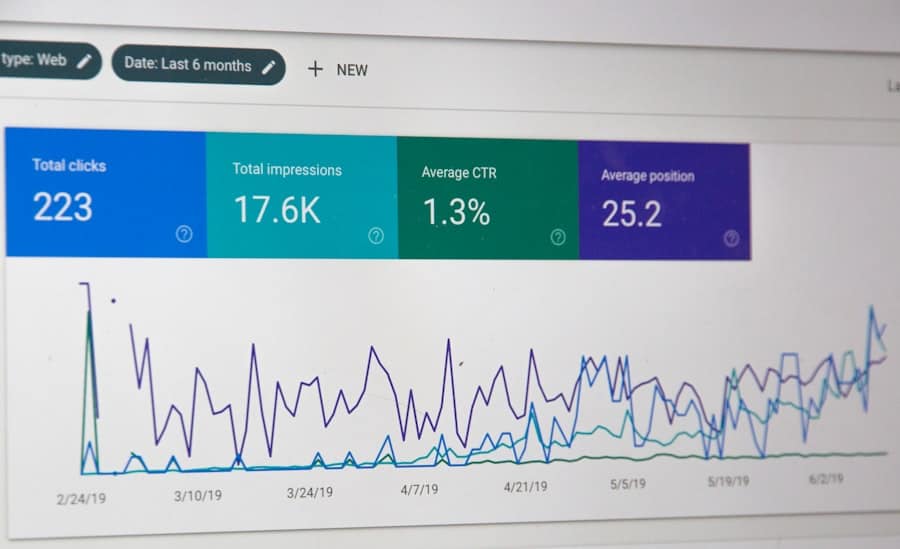Text mining, also known as text data mining, is the process of extracting valuable information from unstructured text data. This technique utilizes natural language processing (NLP), machine learning, and statistical algorithms to analyze large volumes of text and identify patterns, trends, and key insights that may not be immediately apparent. Unstructured text data refers to any textual information that lacks a predefined data model or structure.
Examples include emails, social media posts, customer reviews, and various other forms of written content. The primary goal of text mining is to transform this unstructured data into actionable insights that can be used for decision-making and strategic planning. In today’s digital age, the importance of text mining has grown significantly due to the exponential increase in unstructured text data.
Organizations across various industries are employing text mining techniques to gain valuable insights from their textual data. These insights can include understanding customer sentiment, identifying emerging trends, and extracting crucial information from documents. The advancement of artificial intelligence (AI) and machine learning has led to more sophisticated and powerful text mining capabilities.
This progress has enabled organizations to make data-driven decisions based on their textual data, improving their ability to respond to market changes, customer needs, and emerging opportunities.
Key Takeaways
- Text mining involves analyzing and extracting useful information from unstructured text data.
- Artificial intelligence plays a crucial role in text mining by automating the process of analyzing and extracting insights from large volumes of text data.
- Text mining helps in identifying patterns and trends in text data, which can be used for various purposes such as market research and customer feedback analysis.
- Extracting key information from unstructured text is made possible through techniques such as natural language processing and machine learning algorithms.
- Sentiment analysis is a popular application of text mining, which involves determining the sentiment or opinion expressed in text data, such as customer reviews or social media posts.
The Role of Artificial Intelligence in Text Mining
Deep Learning Revolutionizes Text Mining
One of the key advancements in AI that has revolutionized text mining is deep learning, a subset of machine learning that uses neural networks to learn from large amounts of data. Deep learning models have shown remarkable performance in various NLP tasks, such as language translation, text summarization, and sentiment analysis. These models can understand the context and semantics of textual data, enabling them to extract valuable insights and patterns that were previously difficult to uncover.
Machine Learning Algorithms for Text Classification
In addition to deep learning, AI-powered text mining tools also leverage machine learning algorithms to classify and cluster textual data into meaningful categories. These algorithms can automatically group similar documents together based on their content, making it easier for organizations to organize and analyze their textual data.
Unlocking Valuable Insights with AI-Powered Text Mining
Overall, AI has significantly enhanced the capabilities of text mining, allowing organizations to unlock valuable insights from their unstructured text data.
Identifying Patterns and Trends in Text Data

Text mining enables organizations to identify patterns and trends within their textual data, providing valuable insights that can inform business decisions. By analyzing large volumes of unstructured text data, organizations can uncover recurring themes, topics, and sentiments that are present in their textual data. This can help organizations understand customer preferences, market trends, and emerging issues that may impact their business.
One way text mining identifies patterns and trends is through the use of topic modeling algorithms. Topic modeling is a technique that automatically identifies topics or themes within a collection of documents. By applying topic modeling to textual data, organizations can uncover the underlying themes and subjects that are prevalent in their documents.
This can help organizations gain a deeper understanding of the content within their textual data and identify patterns that may not be immediately apparent. Another way text mining identifies patterns and trends is through the analysis of sentiment within textual data. Sentiment analysis uses NLP techniques to determine the emotional tone of a piece of text, such as positive, negative, or neutral.
By analyzing the sentiment of textual data, organizations can gain insights into customer opinions, market sentiment, and public perception of their products or services. This can help organizations make informed decisions based on the sentiment trends present in their textual data.
Extracting Key Information from Unstructured Text
| Metrics | Value |
|---|---|
| Accuracy | 85% |
| Precision | 90% |
| Recall | 80% |
| F1 Score | 87% |
Text mining enables organizations to extract key information from unstructured text data, providing valuable insights that can drive business decisions. Unstructured text data often contains valuable information that is buried within large volumes of documents, making it difficult for organizations to manually extract and analyze this information. Text mining tools use NLP and machine learning algorithms to automatically extract key information from unstructured text data, such as named entities, relationships between entities, and important keywords.
Named entity recognition (NER) is a key technique used in text mining to identify and extract important entities from textual data, such as names of people, organizations, locations, dates, and more. By automatically extracting named entities from unstructured text data, organizations can gain valuable insights into the key entities mentioned within their documents. This can help organizations understand the relationships between different entities and identify important information that may impact their business.
In addition to NER, text mining also uses keyword extraction techniques to identify important keywords and phrases within textual data. Keyword extraction algorithms analyze the frequency and relevance of words within a document to identify the most important terms. By extracting keywords from unstructured text data, organizations can gain insights into the main topics and themes present within their documents.
This can help organizations categorize and organize their textual data more effectively, making it easier to extract valuable information.
Text Mining for Sentiment Analysis
Sentiment analysis is a key application of text mining that enables organizations to understand the emotional tone and opinions expressed within textual data. By analyzing the sentiment present in unstructured text data, organizations can gain insights into customer opinions, market sentiment, and public perception of their products or services. Sentiment analysis uses NLP techniques to classify the emotional tone of a piece of text as positive, negative, or neutral, enabling organizations to quantify and analyze sentiment trends within their textual data.
One way organizations use sentiment analysis is to monitor customer feedback and reviews about their products or services. By analyzing the sentiment expressed in customer reviews, organizations can gain insights into customer satisfaction levels, identify areas for improvement, and make informed decisions based on customer feedback. This can help organizations enhance their products or services based on the sentiment trends present in customer reviews.
Another way organizations use sentiment analysis is to monitor public sentiment towards their brand or industry. By analyzing social media posts, news articles, and other forms of textual data, organizations can gain insights into public perception and sentiment towards their brand or industry. This can help organizations understand public opinion trends, identify potential reputational risks, and take proactive measures to address any negative sentiment towards their brand.
Text Mining for Topic Modeling and Clustering

Topic modeling and clustering are key applications of text mining that enable organizations to automatically identify topics or themes within their textual data. By applying topic modeling and clustering algorithms to unstructured text data, organizations can uncover underlying themes and subjects that are prevalent in their documents. This can help organizations gain a deeper understanding of the content within their textual data and identify patterns that may not be immediately apparent.
One way organizations use topic modeling is to automatically categorize large volumes of documents into meaningful topics or themes. Topic modeling algorithms analyze the content of documents to identify recurring themes or topics present within the textual data. By categorizing documents into topics, organizations can organize and analyze their textual data more effectively, making it easier to extract valuable insights.
Another way organizations use clustering is to group similar documents together based on their content. Clustering algorithms automatically group similar documents into clusters based on their content similarity, enabling organizations to organize their textual data into meaningful categories. This can help organizations identify patterns and trends within their textual data by grouping similar documents together and analyzing the content within each cluster.
The Future of Text Mining and AI Integration
The future of text mining lies in the integration of advanced AI technologies that will further enhance the capabilities of extracting valuable insights from unstructured text data. As AI continues to advance, we can expect more sophisticated NLP algorithms that can understand human language with higher accuracy and context awareness. This will enable organizations to extract even more nuanced insights from their textual data, leading to better decision-making and strategic planning.
Furthermore, the integration of AI with text mining will lead to more automated processes for analyzing large volumes of unstructured text data. AI-powered text mining tools will be able to automatically extract key information, identify patterns and trends, and perform sentiment analysis without the need for manual intervention. This will significantly reduce the time and resources required for analyzing textual data, allowing organizations to gain insights more efficiently.
In addition, we can expect AI-powered text mining tools to become more accessible and user-friendly for non-technical users. As AI technologies continue to evolve, we can anticipate more intuitive interfaces and tools that enable users with varying levels of technical expertise to leverage the power of text mining for gaining valuable insights from their textual data. Overall, the future of text mining and AI integration holds great promise for organizations looking to unlock valuable insights from their unstructured text data.
With advancements in AI technologies and continued innovation in text mining techniques, we can expect to see even more powerful tools for analyzing textual data and making data-driven decisions based on valuable insights extracted from unstructured text.
If you’re interested in the intersection of technology and psychology, you may want to check out the article “If We Asked Sigmund Freud About the Metaverse, What Would He Say?” on Metaversum.it. This thought-provoking piece explores the potential psychological implications of the metaverse and how it could impact our mental well-being. It’s a fascinating read that delves into the potential effects of virtual reality on our psyche. (source)
FAQs
What is text mining?
Text mining is the process of analyzing and extracting useful information from large amounts of unstructured text data. This can include identifying patterns, trends, and relationships within the text.
What are the applications of text mining?
Text mining has a wide range of applications, including sentiment analysis, document categorization, information retrieval, and language translation. It is commonly used in fields such as marketing, customer service, healthcare, and finance.
What are the techniques used in text mining?
Some common techniques used in text mining include natural language processing (NLP), machine learning, and statistical analysis. These techniques help to process and analyze text data to extract meaningful insights.
What are the benefits of text mining?
Text mining can help organizations make better decisions by uncovering valuable insights from large volumes of text data. It can also automate the process of analyzing text, saving time and resources.
What are the challenges of text mining?
Challenges in text mining include dealing with unstructured data, handling different languages and dialects, and ensuring the accuracy and reliability of the extracted information. Additionally, privacy and ethical concerns may arise when analyzing personal or sensitive text data.











Leave a Reply